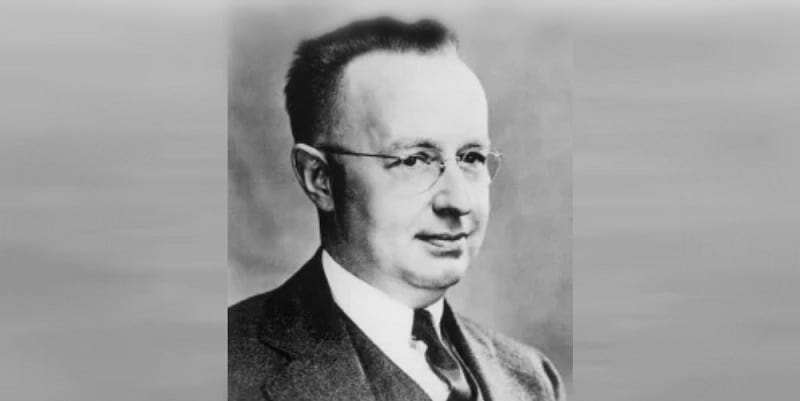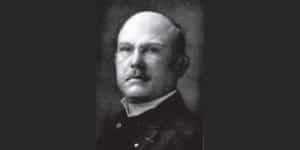Walter Andrew Shewhart biography and theory

Walter Andrew Shewhart (1891 – 1967) was an American physicist, statistician, and engineer. Dr. Walter Andrew Shewhart is also known as the founder of today’s statistical quality control. He became known for his role in the development of the PDCA cycle, together with William Edwards Deming. This article highlights his biography, his contribution to quality management, famous quotes and written books and publications. Enjoy reading!
Walter Andrew Shewhart biography
Background and education
Walter Shewhart was born in New Canton, Illinois. His parents were Anton and Esta Barney Shewhart, and he graduated from the University of Illinois, before receiving his PhD in physics from the University of California, Berkeley, in 1917. He married Edna Elizabeth Hart during this period.
In the years after he received his doctorate, he worked as an assistant researcher in physics at the University of Illinois.
He then became the principal of the physics department at the Wisconsin Normal School in Lacrosse. He spent the remainder of his career with Western Electric Company. He worked at Bell Telephone Laboratories from 1925 until his retirement in 1956.
Career and his contribution to quality management
That first company, Western Electric Company, learned from experience around 1920 that repeatedly adjusting a production process to compensate for observed deviations from the process average can lead to greater variability. On the other hand, a large deviation from the process average may indicate that corrective action is required.
An answer was therefore needed to the question of how one could find out which process should be adjusted and which process should be left alone. That task was given to Dr. Shewhart.
He then came up with a new statistical tool in 1924. This tool is known today as the control chart. The control chart signals when looking for a cause of variation and removing this cause will actually reduce variations. It is a chart that outlines repeated characteristics of a production process in chronological order.
The graph has a horizontal centerline that corresponds to the average values of the characteristic, including upper and lower control limits. Points outside these values are seen as a necessity for a special investigation of the process to identify disturbing causes.
In the 1920s, Walter continued to work on the concept of control charts. He published a series of articles in the Bell System Technical Journal on the construction, application and usefulness of various types of control cards.
In 1932 Walter Shewhart was invited to give a lecture in England, under the direction of Karl Pearson. He received much criticism for his lecture. His ideas were considered uninteresting in the circle of English statistical tradition. Nevertheless, he continued to work on his statistical concept of tolerance intervals.
He published his book Statistical Method from the Viewpoint of Quality Control in 1939. The book answers the following question: “What can statistical practice, and science in general, learn from the experience of industrial quality control?”
Shewhart also taught quality control and applied statistics at the University of London. He also did this at the Stevens Institute of Technology and the Graduate School of the United States Department of Agriculture.
He was furthermore associated with academic institutions in India. He went on to become known for other important positions, such as becoming a member of the Visiting Committee of the Harvard Department of Social Relations and a member of the Advisory Committee of the Department of Mathematics in Princeton.
His method was also used for official services. Therefore, he also formally served the United States Department of War, the United Nations, and the Government of India. He had a strong influence on the National Research Council and the International Statistical Institute.
When he returned to the US from India, he was hired as director of the Institute of Mathematical Statistics and he participated in the American Association for the Advancement of Science.
In 1938, Shewhart’s work came to the attention of physicists William Edwards Deming and Raymond Birge.
These individuals were fascinated by the matter of measurement error in science and had a groundbreaking paper published in Reviews of Modern Physics in 1934. After seeing Shewhart’s insights, they transformed their approach and reformulated everything in Shewhart’s own terms. This meeting marked the beginning of a longstanding collaboration between Walter and William Edwards Deming.
He died on March 11, 1967 in Troy Hills, New Jersey.
Famous quotes
- “Both pure and applied science have gradually pushed further and further the requirements for accuracy and precision. However, applied science, particularly in the mass production of interchangeable parts, is even more exacting than pure science in certain matters of accuracy and precision.”
- “Every sentence in order to have definite scientific meaning must be practically or at least theoretically verifiable as either true or false upon the basis of experimental measurements either practically or theoretically obtainable by carrying out a definite and previously specified operation in the future. The meaning of such a sentence is the method of its verification.”
- “Postulate 1. All chance systems of causes are not alike in the sense that they enable us to predict the future in terms of the past.”
- “Postulate 2. Constant systems of chance causes do exist in nature.”
- “Postulate 3. Assignable causes of variation may be found and eliminated.”
- “Rule 1. Original data should be presented in a way that will preserve the evidence in the original data for all the predictions assumed to be useful.”
Books and publicaties by Walter Andrew Shewhart et al.
- 1986. Statistical method from the viewpoint of quality control. Courier Corporation.
- 1958. Nature and origin of standards of quality. The Bell System Technical Journal, 37(1), 1-22.
- 1940. Contribution of statistics to the science of engineering.
- 1939. Application of statistical method in mass production.
- 1938. Application of statistical methods to manufacturing problems. Journal of the Franklin Institute, 226(2), 163-186.
- 1935. Statistical control in applied science.
- 1934. Some aspects of quality control.
- 1933. The role of statistical method in economic standardization. Econometrica: Journal of the Econometric Society, 23-35.
- 1931. Economic control of quality of manufactured product. Macmillan And Co Ltd, London.
- 1931. Economic control of manufactured product. van Nostrand.
- 1931. Statistical method from an engineering viewpoint. Journal of the American Statistical Association, 26(175), 262-269.
- 1930. Economic quality control of manufactured product 1. Bell System Technical Journal, 9(2), 364-389.
- 1928. Economic aspects of engineering applications of statistical methods. Journal of the Franklin Institute, 205(3), 395-405.
- 1926. Quality control charts. The Bell System Technical Journal, 5(4), 593-603.
- 1925. The application of statistics as an aid in maintaining quality of a manufactured product. Journal of the American Statistical Association, 20(152), 546-548.
- 1924. Some applications of statistical methods to the analysis of physical and engineering data. Bell System Technical Journal, 3(1), 43-87.
- 1917. A study of the accelerated motion of small drops through a viscous medium. Physical Review, 9(5), 425.
- 1916. A study of ripple wave motion. Physical Review, 7(2), 226.
How to cite this article:
Janse, B. (2022). Walter Andrew Shewhart. Retrieved [insert date] from Toolshero: https://www.toolshero.com/toolsheroes/walter-andrew-shewhart/
Original publication date: 10/21/2022 | Last update: 06/26/2023
Add a link to this page on your website:
<a href=”https://www.toolshero.com/toolsheroes/walter-andrew-shewhart/”>Toolshero: Walter Andrew Shewhart</a>











